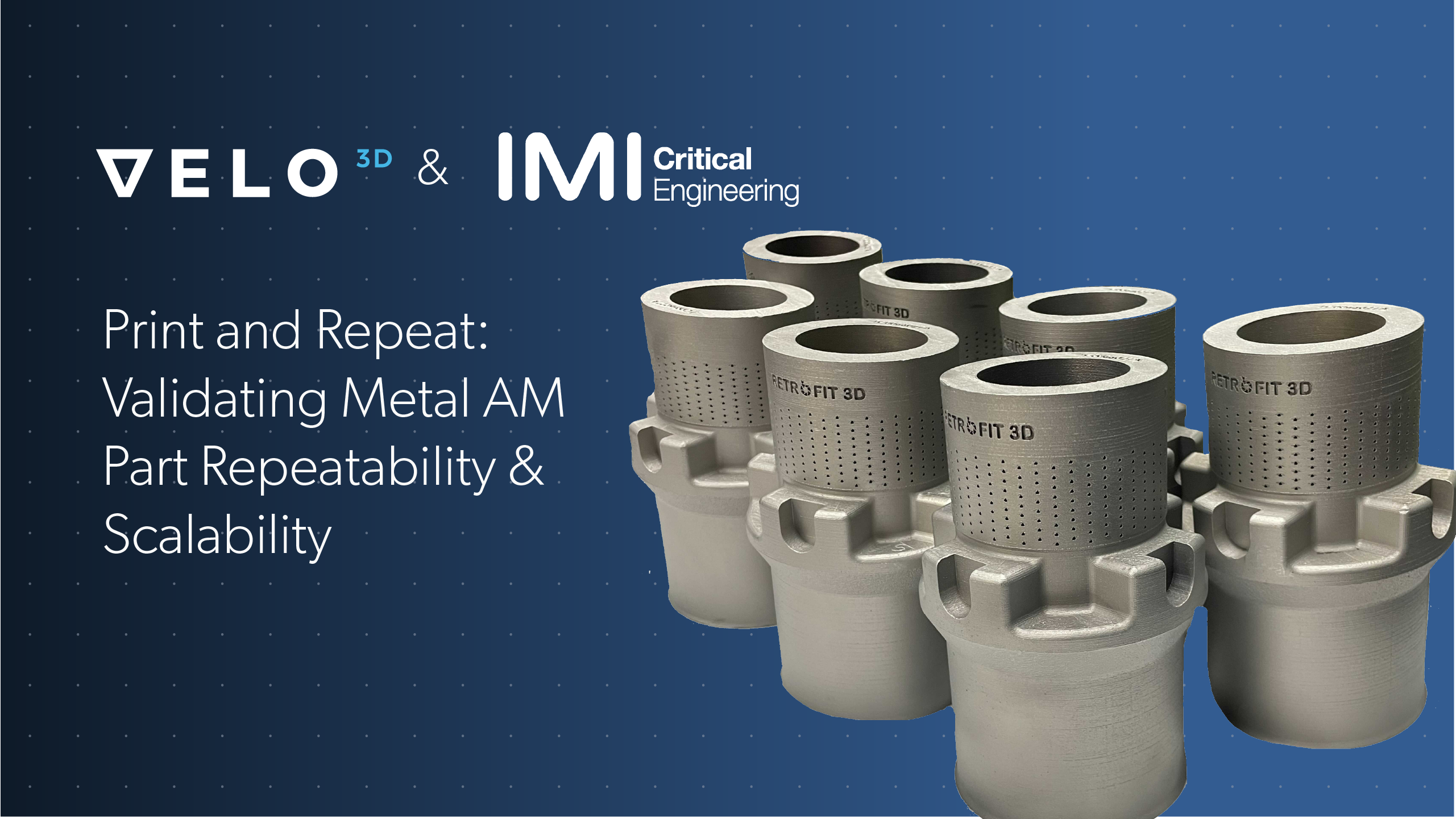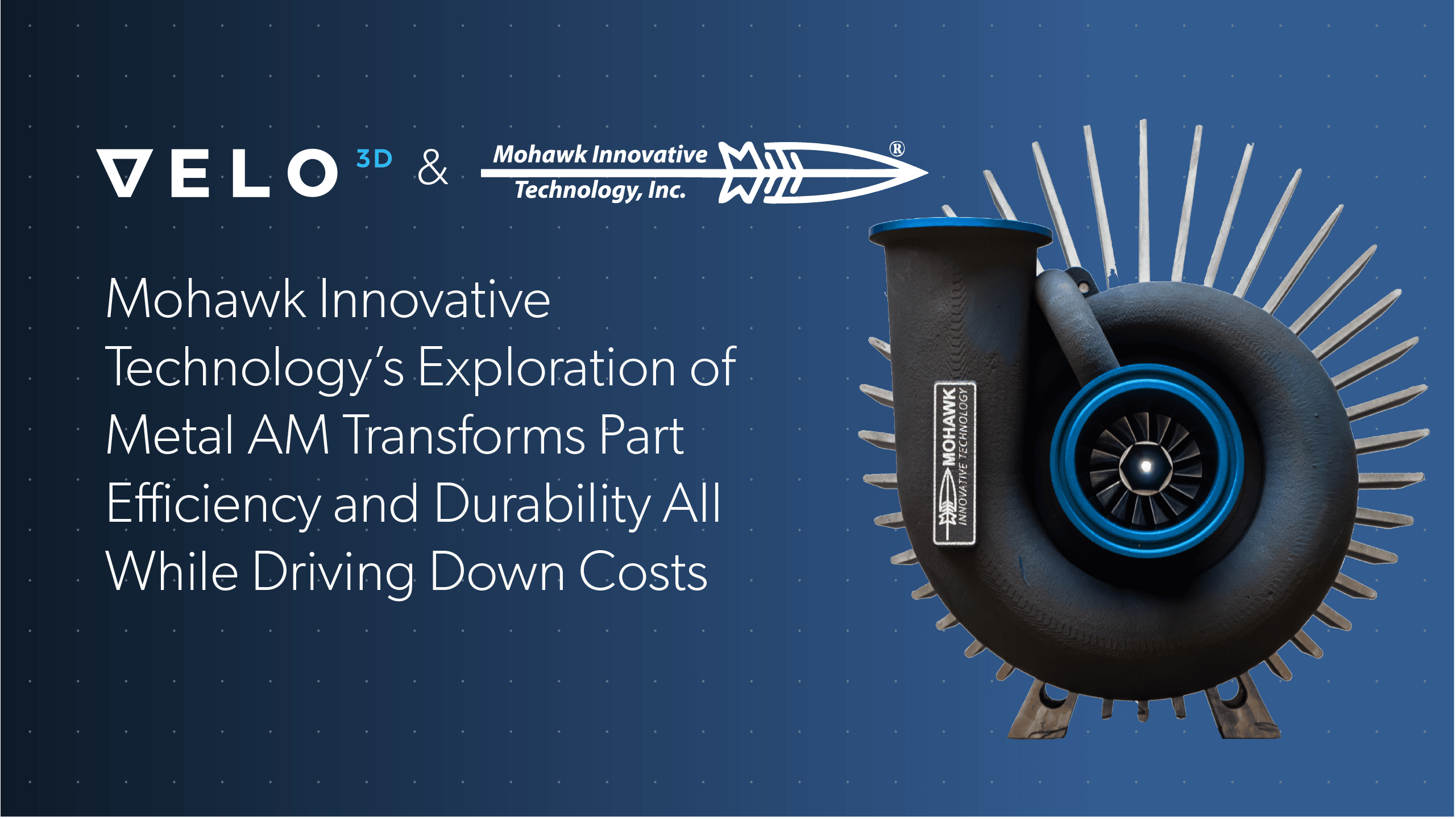Industry
Metal additive manufacturing (AM) is a rapidly growing technology that is transforming the way products are designed and manufactured. The technology has earned a good reputation with innovation-focused engineers and organizations that need to produce high-quality parts that feature intricate geometries.
It’s no secret that metal AM is helping drive the space and tooling industries forward, but now the technology is also starting to break ground with the energy sector, where it has the potential to significantly overcome one of the industry’s most pressing challenges: replacement parts.
Smooth Operators
Oil and gas production facilities are complex and expensive to operate. Operators need a way to get replacement parts quickly and easily to facilities in remote locations without having to stock expensive inventory or redesign and qualify new parts from scratch.
Unfortunately, lead time for conventionally manufactured components can take months to source. Ordering more replacement parts than needed to meet minimum order quantities or have parts on hand is one option but storing that inventory comes with its own logistical and financial headaches.
“The oil and gas industry has billions of dollars of spare parts in inventory at any given time,” said Carlo De Bernardi, AM lead for oil and gas producer ConocoPhillips, in a recent interview with Additive Manufacturing magazine.
De Bernardi believes that AM’s true value for oil and gas is not about part design but in its ability to help reduce cost and provide greater supply chain flexibility by giving energy operators the ability to print parts when and where they are needed.
The Proof is in the Printing
In truth, manufacturing new part designs using 3D printing is a trait common to many additive manufacturing technologies. What is less common, and unique to Velo3D’s fully integrated metal AM solution, is the ability to reproduce the same part, system to system, site to site, and year after year achieving the same material properties and geometric accuracy.
This capability has the potential to significantly reduce qualification times and improve the efficiency and effectiveness of oil and gas production, from the design and development of new equipment to the repair and maintenance of existing assets.
Evidence of Velo3D’s unique repeatability and scalability capability can be witnessed in a series of case studies done in collaboration with IMI Critical Engineering. A leader in flow control solutions, IMI was approached by a major oil and gas operator to conduct a pilot program to meet API20S requirements for additively manufactured mission critical upstream oil and gas components, which it did successfully using Velo3D technology.
The original results proved so encouraging, IMI set out to conduct another analysis of Velo3D technology for its Retrofit3D business, which uses AM in place of traditional manufacturing methods to provide customers with high performance valve trim upgrade solutions for increased reliability and performance. The goal of this test was to validate the Velo3D “Golden Print” file’s capability to produce parts with consistent geometric accuracy and material properties and help overcome ongoing supply chain scalability challenges.
The collaboration involved taking the same print file from the original production qualification completed in Q4 2020 and printing it in six separate locations (four in the US as well as manufacturing facilities in Austria and Korea).
Velo3D’s unique approach provides customers with access to a ‘digital’ inventory: a scalable, persistent, and on-demand supply chain that delivers identical parts site to site, year after year—an ideal solution to the supply chain and warehousing struggles outlined by De Bernandi and oil and gas organizations.
The Future of AM for Oil & Gas
AM is increasingly being adopted by oil and gas companies around the world. One example of an oil and gas company that is already using AM is ConocoPhillips. ConocoPhillips is using AM to produce a variety of parts for its offshore drilling rigs, including drill bits, downhole tools, and other components. The company found that AM can help improve the quality, reliability, and performance of its equipment, while also reducing costs.
AM offers several advantages over traditional manufacturing methods for oil and gas production, including:
- Speed: AM can produce parts much faster than traditional manufacturing methods, which can help to reduce downtime and improve efficiency.
- Flexibility: AM can be used to produce complex parts with intricate geometries that would be difficult or impossible to manufacture using traditional methods.
- Cost: AM can be a cost-effective way to produce parts, especially in small quantities or when eliminating the need for multiple manual operations.
As AM continues to develop, it is likely to play an even greater role in the oil and gas industry. This could lead to significant improvements in efficiency, productivity, and profitability.
For real-world examples of how Velo3D can help oil and gas organizations better manufacture and maintain their equipment, read the following case studies or contact our engineering team.


